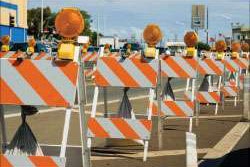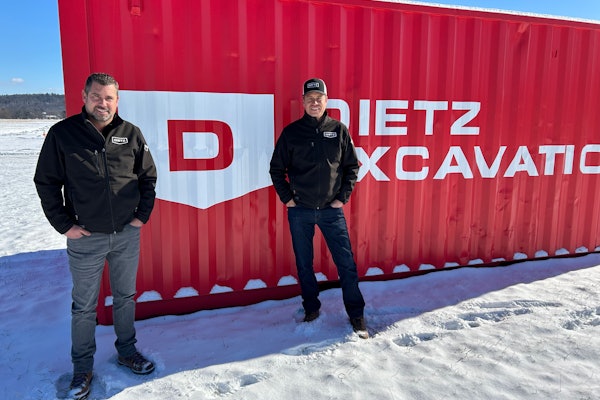The Job and Tax Math of the Stimulus
By John Latta

And, says the report, this direct job creation from ARRA has meant that $343 million in unemployment checks have been avoided and nearly $419 million will be paid in Federal taxes.
But how does the committee calculate “a job”. And how are the tax and unemployment check numbers figured?
A little background.
Of the $64.1 billion provided for transportation and infrastructure programs under the Recovery Act, Federal, State, and local agencies administering programs within the Committee’s jurisdiction had announced 19,470 transportation and other infrastructure projects totaling $62.7 billion as of June 18. This amount represents 98 percent of the total available funds. Of this $50.6 billion has been obligated for 19,147 projects.
The committee says, and there’s a lot of public support from lobby and industry groups for this proposition, that ARRA has played a key role in putting Americans back to work. Of the $38 billion available for highway, transit, and wastewater infrastructure formula program projects under the Recovery Act, $34.7 billion, or 92 percent, has been put out to bid on 18,396 projects, as of May 31, 2010. Within this total, 17,405 projects (totaling $33.1 billion, or 87 percent) are under contract. Across the nation, work has begun on 16,103 projects totaling $31.8 billion, or 84 percent. Within this total, work has been completed on 5,862 projects totaling $4.6 billion.
So, to the job and tax numbers.
During the first year of implementation, these projects created or sustained nearly 350,000 direct, on-project jobs, said the committee. But how do they figure this? According to the report, the number of direct jobs is based on direct, on-project full-time-equivalent (FTE) job months. One person working full time or two people working one-half time for one month represents one FTE job month. FTE job months are calculated by dividing cumulative job hours created or sustained by 173 hours (40 hours per week times 52 weeks divided by 12 months = 173 hours).
Total employment, which includes direct, indirect, and induced jobs, reached almost 1.2 million jobs, the report reported. To calculate total employment, the committee assumed that an expenditure of $7,667 creates one FTE job month ($92,000 creates one FTE job year). The multiplier is based upon the President’s Council of Economic Advisers’ guidance.
During the first month of the second year of implementation (March 2010), the Recovery Act created or sustained 55,000 direct, on-project jobs. Total employment, which includes direct, indirect, and induced jobs, surpassed 140,000 jobs.
Direct job creation from these projects has resulted in payroll expenditures of $2 billion. Using this data, the committee calculates that $343 million in unemployment checks have been avoided as a result of this direct job creation.
The value of unemployment checks avoided is determined by multiplying FTE direct job months created or sustained by the average monthly unemployment benefits paid ($1,448.33) times the percentage of unemployed workers collecting unemployment benefits (58.6 percent). The Congressional Research Service (CRS) provided the committee with this information.
Furthermore, says the report, these direct jobs have caused nearly $419 million to be paid in Federal taxes. The value of Federal taxes paid is calculated by multiplying the direct jobs payroll by the average total Federal tax rate (20.45 percent), the sum of the average tax rate with respect to adjusted gross income (12.8 percent) and average social insurance payments (7.65 percent) for the 2008 tax year).v
Freight Movement Crisis
A new report looking at the movement of freight in America portrays a scary scenario if infrastructure in America remains stalled.
The American Association of State Highway and Transportation Officials (AASHTO) has released its Unlocking Freight Report. Not surprisingly, it offers more proof that our transportation infrastructure needs more investment. Current levels do not even offer the possibility of maintaining that infrastructure, according to this report. The new report identifies key projects in 30 states that would improve freight delivery and dependability, and offers a three-point plan to address what is needed to relieve freight congestion, generate jobs and improve productivity.
“The simple fact is: no transportation, no economy. They are inseparable,” said AASHTO President and Mississippi DOT Executive Director Larry L. “Butch” Brown. “We must invest to maintain and strengthen the American ‘transconomy.’”
In 10 years, an additional 1.8 million trucks will be on the road; in 20 years, for every two trucks today, another one will be added, according to the report. Already bottlenecks on major highways used by truckers every day are adding millions of dollars to the cost of food, goods and manufacturing equipment for American consumers.
Despite more long-distance freight being moved by intermodal rail, the report finds that trucks will still carry 74 percent of the load. On average, 10,500 trucks a day travel some segments of interstates today. By 2035, this will increase to 22,700 commercial trucks for these portions of the interstate, with the most heavily used segments seeing upwards of 50,000 trucks a day. Yet between 1980 and 2006, traffic on the Interstate Highway System increased by 150 percent while interstate capacity increased by only 15 percent, said the report.
“This report outlines what’s at stake if we fail to invest to meet the growing demands on our transportation infrastructure,” said Pennsylvania Governor Ed Rendell.
Iowa Department of Transportation Director Nancy Richardson said states “need greater investment and sound federal transportation polices to allow them to expand capacity when and where necessary.”
Minnesota DOT Commissioner Thomas Sorel said, “The Port of Duluth-Superior is an example of hundreds of freight-related projects in desperate need of greater investment. It’s one of the largest inland seaports in the world, bringing in iron ore and coal docks, grain elevators and specialized cargo facilities lining the industrial waterfronts of Duluth, Minnesota and Superior, Wisconsin. Yet the infrastructure is currently deficient in terms of capacity, physical condition and safety.”
“The nation’s multimodal freight transportation system directly affects economic development, current and future jobs, and the quality of life in our communities,” said Ohio DOT Director Jolene M. Molitoris, MVC incoming vice president. “Today the nation’s freight transportation system supports more than 10 million jobs, from couriers, truckers, laborers, shippers, railroad conductors and mechanics to postal carriers, warehouse operators and stock clerks. Now, think about how many more jobs will be added as the industry grows over time and you begin to see yet another reason why this study is so important.”
Tennessee Department of Transportation Commissioner Gerald Nicely, speaking of the report, said, “To accommodate this predicted growth in freight movement, we need to think nationally, regionally, and on a multi-modal level. Central to this effort should be the creation of a National Multimodal Freight Plan to ensure that transportation investments are coordinated and made where most needed. By linking trucks, rail, waterway transport and aviation, freight can be moved more efficiently throughout the nation.”
For more information and to see state examples of freight capacity needs, go to https://expandingcapacity.transportation.org/. v
Let’s Treat Infrastructure Maintenance Like Debt Service
 www.bondbuyer.com
www.bondbuyer.comWe decry the decrepit state of our “crumbling” infrastructure, but we have yet to adopt legal rules needed to provide for its ongoing maintenance and repair.
A glance at the law governing enforcement of municipal bond obligations suggests a possible strategy for solving the maintenance problem, one that could be developed by state and local officials, bond lawyers, and other financial professionals.
Despite the drift of political and editorial rhetoric, the solution here is probably not to increase federal spending. Rather, it probably lies in the more tedious exercise of changing state and local finance laws nationwide to give maintenance spending the same priority, the same legal protection from political plunder, as debt service. This, even though maintenance spending is usually considered part of the annual operating budget separate and distinct from payments to bondholders.
Typically, bondholders are a “permanent” minority. In James Madison’s terms, they are a “faction” of lenders, always outnumbered by the (debtor) faction of voters. If bondholders had to rely for payment on the annual budget log-roll, they would, like any other permanent minority, almost always lose. They would need constitutional safeguards or other effective protection. Indeed, it’s precisely the existence of constitutional protection — or in some cases, an equivalently sturdy economic incentive — that permits states and localities to attract long-term lenders to finance capital projects.
Throughout the late 19th and most of the 20th centuries, bondholders relied largely on the non-impairment provision of the contract clause of the Constitution (and similar interpretations of state constitutions) for protection of their interests. Courts would generally enforce debt-service payment obligations against states and localities, even in the face of periodic political decisions to the contrary.
In the late 19th century, for instance, the docket of the U.S. Supreme Court was crowded with municipal bond enforcement cases. And not too long ago, in 1977, the contract clause protected covenants barring mass transit spending by the Port Authority of New York and New Jersey in the U. S. Trust case.
For more than a century, legal enforceability induced lenders to bear political risks that could result not only in payment default but also in a covenant breach. The muni bond market flourished and grew.
More recently, as shown by the explosive growth of “subject-to-appropriation” or “back-door” credits — where a legal obligation to pay arises only after an appropriation has been made in the fiscal period when payment is due — bondholders have come to rely on the expected draconian consequences of “repudiation” by a (sovereign) state.
If a state should fail to appropriate debt service for an authorized subject-to-appropriation credit, then, for all practical purposes, the market would consider that to be a repudiation of the state’s own debt. As a result, the state would lose access to credit markets, at least until the repudiation itself was repudiated by full payment. Loss of access is an altogether unacceptable risk, one imposing essentially the same payment discipline as legal enforceability.
For locals, markets generally don’t accept repudiation risk as an effective safeguard for long-term lending, in part because locals are in no relevant sense sovereign in our federal system, and in part because no one can confidently predict what they may do. After all, Los Angeles is now boycotting Arizona, and the West 67th Street Block Association in New York City once had its own foreign policy.
Those factors raise two questions about infrastructure maintenance:
Are supporters of current maintenance those who oppose “deferred maintenance,” a permanent minority in need of constitutional protection in our political system, just like bondholders themselves?
Are special projects like limited-access highways and toll bridges — which produce cash revenue to pay bondholders and where that cash is not normally required to be spent only in the budget appropriation process — in a different analytical position from ordinary infrastructure projects like local roads, bridges, schools, and parks, which produce no cash revenue and where general obligation or other tax-supported bondholders get paid even if the project falls apart?
As to the first question, deferred maintenance is hardly a laudable public-policy goal, despite the pledge of one desperate candidate to be the veritable champion of deferred maintenance. Rather, deferred maintenance is to be avoided if all that crumbling infrastructure is to be avoided.
No one can tell when maintenance is deferred, without granular expertise in capital and operating budgets. As a result, the repudiation risk has no bite. Everyone wants infrastructure to be maintained, but everyone also has multiple higher priorities. No special interest groups or political action committees organize around pro-maintenance slogans. Indeed, interest groups frequently target funds otherwise earmarked for maintenance as a funding source for their own wages, benefits, or transfer payments. Also, few ribbon-cutting photo-ops are held to herald maintenance programs.
So, yes, proponents of current maintenance and opponents of deferred maintenance constitute a permanent minority in need of constitutional protection in the normal budget process.
For the second question, comparing how we finance revenue-generating projects with how we finance ordinary infrastructure suggests a fix. Revenue bond indentures effectively protect maintenance requirements as if they were debt-service requirements by building the former into coverage ratios for the latter. Investors fear projects that are not maintained will fail to generate the requisite revenue to pay debt service.
Generally, no money is released from the lien of a revenue bond indenture unless debt service is paid and operations and maintenance requirements are met. Enforceable covenants require issuers to raise tolls, fares or other charges sufficiently to meet both those requirements.
By contrast, GO and other tax-supported debt instruments are not generally issued with enforceable claims for current maintenance. Ordinary infrastructure projects produce returns in the form of public goods, not cash — public goods that benefit taxpayers, not bondholders. Those projects’ bonds are paid for by taxpayers, not direct users, and taxing and spending for payment are part of the annual budget process, where any pro-maintenance lobby is a perpetual minority.
So, yes, we should consider reconfiguring state and local finance laws, jurisdiction by jurisdiction, to provide the equivalent of debt service protection for maintenance requirements, by authorizing financing mechanisms for ordinary infrastructure that recognize enforceable claims for current maintenance and repair. This would entail authorizing a parallel structure to a revenue-bond financing structure.
The aim here would be for budget-makers to provide for maintenance spending, along with debt service spending, before recognizing other claims on annual revenue. A one-size-fits-all model or uniform law would probably not work for 50 states.
This is not to suggest that maintenance claims are more important than the compelling and competing claims of teachers, police, or sick children. It is, however, to suggest that maintenance claims — like the claims of bondholders — are unlikely ever to be met in the normal political process without structural fiscal safeguards. So, unless we change the rules of the game, we’ll probably have to live with our “crumbling” infrastructure.
Editor’s Note: Eugene W. Harper Jr., a retired New York bond lawyer, teaches infrastructure finance at the Baruch College, City University of New York, School of Public Affairs. This article ran originally in The Bond Buyer newspaper. Bond Buyer is a SourceMedia publication. SourceMedia is owned by Investcorp, which also owns Randall-Reilly, the parent company of Better Roads.










